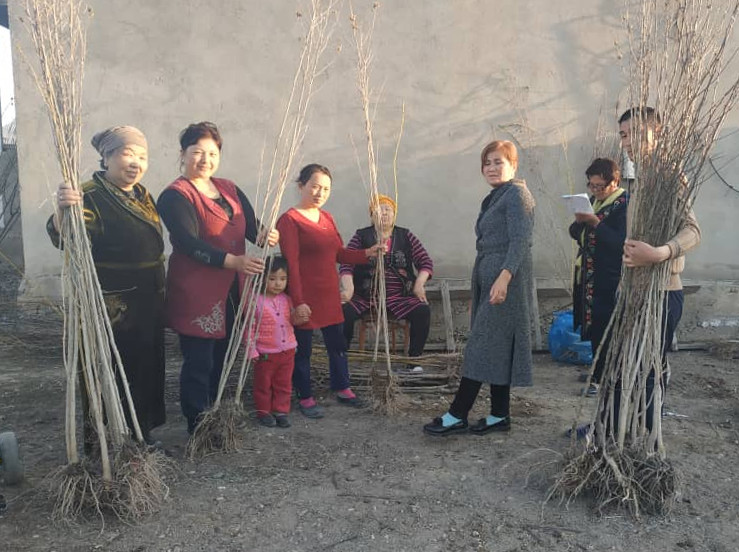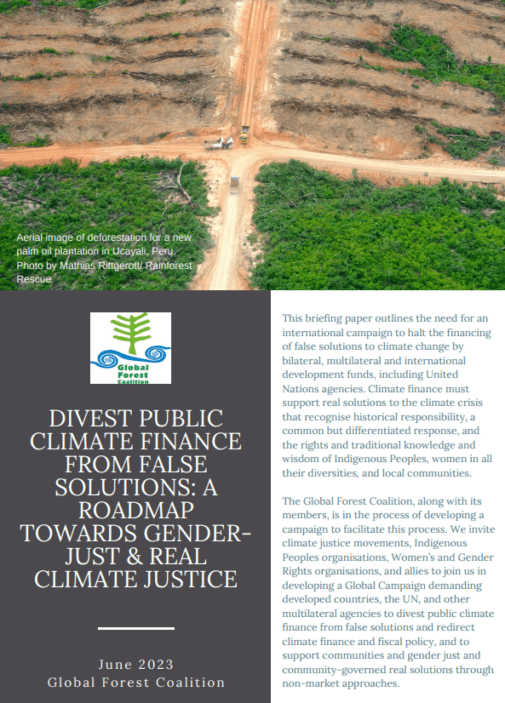Forest conservation must address violence against women

by Jeanette Sequeira, Juana Vera Delgado and Ruth Nyambura, Global Forest Coalition
November 25th has been designated as the International Day for the Elimination of Violence Against Women by the United Nations. The day also marks the beginning of the 16 Days of Activism Against Gender-Based Violence, an international campaign spearheaded by feminists and women’s rights defenders globally to challenge the various manifestations of violence and multiple inequalities that women and girls continue to face.
Preliminary findings from gender assessments that GFC has been conducting with grassroots environmental organisations and forest-dependent communities through the Women2030 programme in Bolivia, Brazil, Colombia, Kenya, Kyrgyzstan and Paraguay show how violence against women is a major threat not just to women but to community development as a whole and the defence of their land and forests. The assessments point to the fact that stopping violence against women is one of the top priorities for achieving gender equality in these communities.
In Kenya, 52% of women interviewed in Marsabit, West Pokot and Narok Counties agree that campaigning to end violence against women is the most important action for improving gender equality in their communities, whereas 37% of men think the same. In the community of Santory in Paraguay 80% of men interviewed and 60% of women placed ending gender-based violence as a top priority, and the same was true in Tarija, in Bolivia. In the Santander department of Colombia 76% of both men and women interviewed in three communities declared stopping violence against women as their community’s number one priority.
In Kyrgyzstan, there are significant cases of ‘bride theft’ of young women and girls in rural villages. Our research findings reveal that to counter this form of gendered violence, local environmental organizations are raising awareness in secondary schools and village women’s groups. An interesting thing about the consciousness-raising happening is that it is also being done by supporting community-led conservation initiatives such as school ethnobotanical gardens, planting medicinal plants for women’s livelihood generation and women’s sustainable pasture use trainings.
Having more local-level gender dis-aggregated data helps us in identifying the attitudes towards violence against women and gender inequality, as well as the actions that are needed to improve this situation. So far this evidence from the grassroots points to the fact that forest conservation and restoration cannot be successful without tacking the issue of violence against women head on. The destruction of forest ecosystems (a form of violence against Mother Nature) is particularly important to address given that around 250 million people live in and rely on forests and savannahs worldwide, and with the Amazon in flames and deforestation in other parts if the world rising significantly, the need for forest conservation and restoration has become a pressing concern.
A central question of GFCs research focused on the ways in which the community members, both male and female, think that gender equality can be improved. This question is significant for two main reasons. To begin with, women play a vital role in forest conservation. Women interact daily with forests and other ecosystems, relying on them for household needs and their livelihoods, but also for conservation and restoration. In fact, women’s increased participation and decision-making in forest use and conservation groups has shown to lead to greater improvements in the condition of forests, for example in areas in Nepal and India.
The second importance of the research question is that violence against women greatly undermines the communities’ abilities to concretely defend their forests and territories from mainly corporate and state-led threats. Women bear the brunt of the harsh impacts of their communities being enveloped in conflict and mega-projects that displace them from their lands and destroy their ecosystems. Increased levels of domestic violence in these particular regions continues to be witnessed and thus necessitating a sharper analysis of the causes of intimate violence that is located in the wider structural socio-economic and political contexts within various communities.
What is clear from all of GFC’s assessments is that women continue to face multiple obstacles in conserving their forests as they not only struggle to secure land tenure rights, often having to face deeply conservative patriarchal cultural practices, but must often defend their forests against the massive threats from extractivism, whether it be industrial livestock and agriculture (such as the production of soy and palm oil) or mining mega-projects. In addition, there are significant stumbling blocks and structural barriers that hinder genuine community-led forest conservation and restoration. These range from insufficient funding to community driven initiatives that not only have a male bias, but also function as a way to greenwash the activities of heavily polluting industries such as the aviation and industrial forestry sectors.
In conclusion, violence against women cannot be accepted as inevitable, and communities and women’s groups have solutions that urgently need support. We need to invest more in capacity-building on gender equality and women’s rights for men and women alongside forest conservation and restoration initiatives. They must go together if they truly are to be effective. Women’s rights and gender equality must be considered in conservation and sustainable development, from local activities to national decision-making and global policies.
This still isn’t commonplace, women are still not equally represented as national environmental decision-makers, nor is it the norm for conservation organisations to take up feminist and women’s rights perspectives. Forest conservation can never be successful or bring about social justice if it does not address the prevalence of the various manifestations of violence against women, and especially so on the front-lines of the environmental and climate crisis. Today is a good day to remember this and to continue supporting the full liberation of women across the world.








